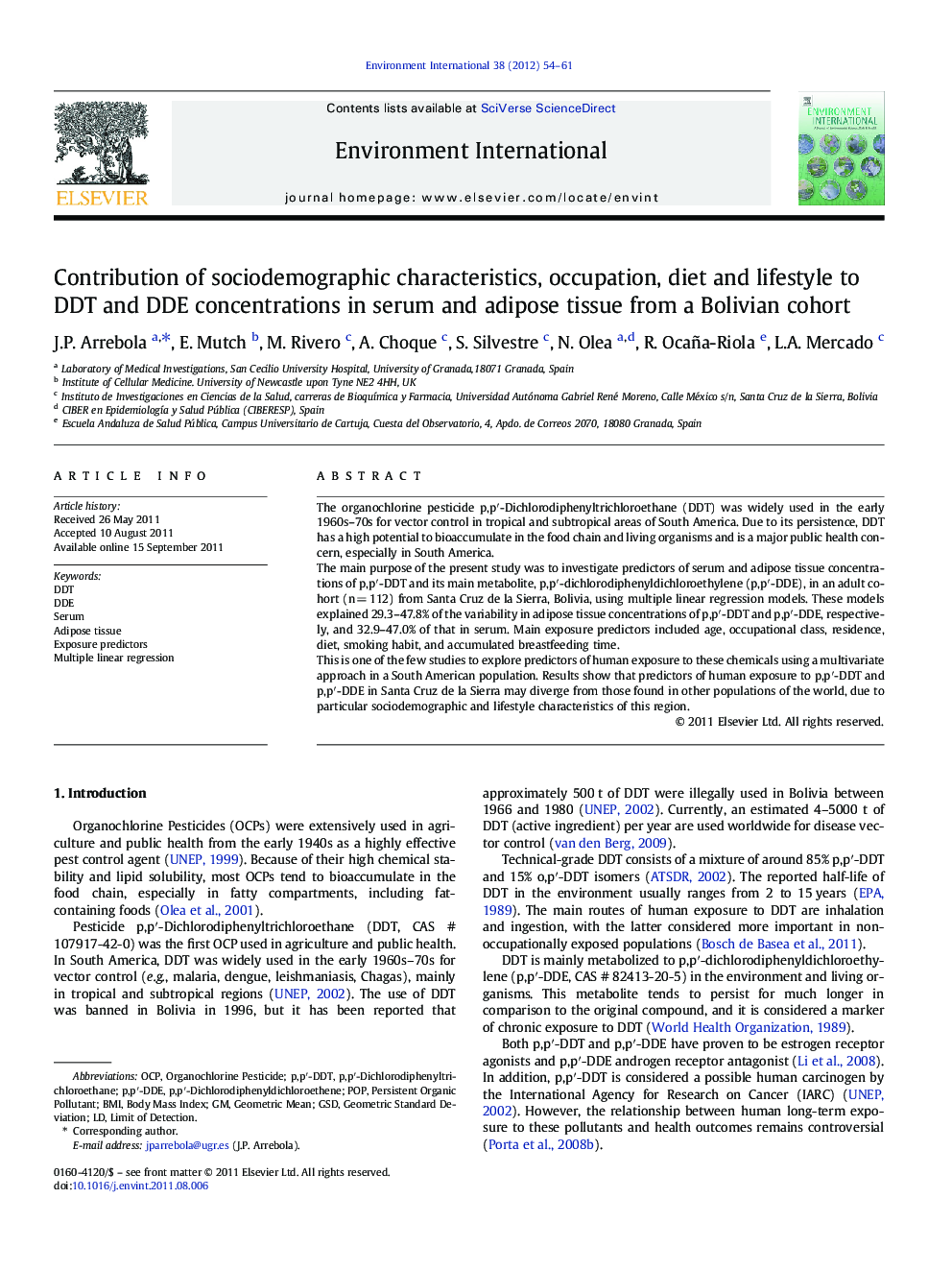| کد مقاله | کد نشریه | سال انتشار | مقاله انگلیسی | نسخه تمام متن |
|---|---|---|---|---|
| 4423162 | 1308812 | 2012 | 8 صفحه PDF | دانلود رایگان |

The organochlorine pesticide p,p′-Dichlorodiphenyltrichloroethane (DDT) was widely used in the early 1960s–70s for vector control in tropical and subtropical areas of South America. Due to its persistence, DDT has a high potential to bioaccumulate in the food chain and living organisms and is a major public health concern, especially in South America.The main purpose of the present study was to investigate predictors of serum and adipose tissue concentrations of p,p′-DDT and its main metabolite, p,p′-dichlorodiphenyldichloroethylene (p,p′-DDE), in an adult cohort (n = 112) from Santa Cruz de la Sierra, Bolivia, using multiple linear regression models. These models explained 29.3–47.8% of the variability in adipose tissue concentrations of p,p′-DDT and p,p′-DDE, respectively, and 32.9–47.0% of that in serum. Main exposure predictors included age, occupational class, residence, diet, smoking habit, and accumulated breastfeeding time.This is one of the few studies to explore predictors of human exposure to these chemicals using a multivariate approach in a South American population. Results show that predictors of human exposure to p,p′-DDT and p,p′-DDE in Santa Cruz de la Sierra may diverge from those found in other populations of the world, due to particular sociodemographic and lifestyle characteristics of this region.
► Serum and adipose tissue p,p′-DDT and p,p′-DDE concentrations were quantified in a Bolivian human cohort.
► Multivariate models were built to predict concentrations.
► Models explained 29.3–47.0% of the total variability.
► Main predictors included age, occupational class, residence, diet, smoking, and breastfeeding.
Journal: Environment International - Volume 38, Issue 1, January 2012, Pages 54–61